How to Understand SAP APO with ERP Location Types
Executive Summary
- A Location Type is a critical component in SAP APO and interacts with ERP locations.
- We cover the various location types used in APO and the CIF.
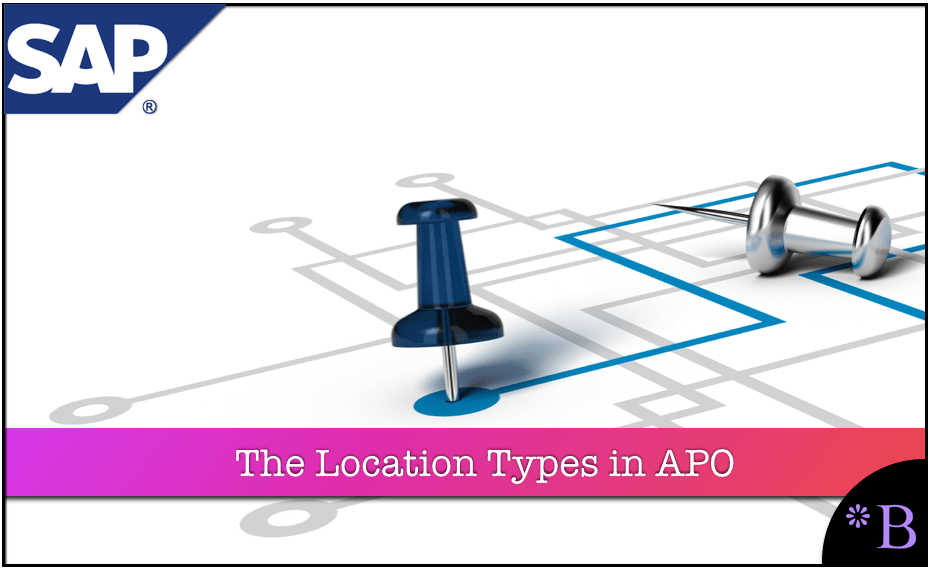
Introduction to Location Types in APO
APO has multiple Location Types. You will learn how to translate requirements to the appropriate Location Type, what the Location Types are, and how they are configured in APO.
Our References for This Article
If you want to see our references for this article and other related Brightwork articles, see this link.
Notice of Lack of Financial Bias: We have no financial ties to SAP or any other entity mentioned in this article.
What is the Location Type?
A location in APO is a master data item, which is what configures the supply network. Locations in SAP ERP translate to different location types in SCM. Here is the key that explains the relationships between the different locations types on the ERP and SCM sides. ERP plants are more simple organizational units. Once we get into the SCM world, more detail is necessary.
- The main point of this is that extra characteristics are necessary with SCM locations because of the application’s planning needs. Once this master data is altered in SCM, it has no counterpart in SAP ERP.
- Locations are normally created by being brought over from SAP ERP.
- Locations in SAP ERP can be the following types:
ERP Locations
- Plant
- Customer Location
- Supplier
- DC
When they come into APO, they become locations with a location type. The following are the location types; as you can see, there are more than the four listed above. This means that APO takes things that are not listed as locations in ERP, things like MRP Area and Carrier, and converts them into location types:
APO Location Types
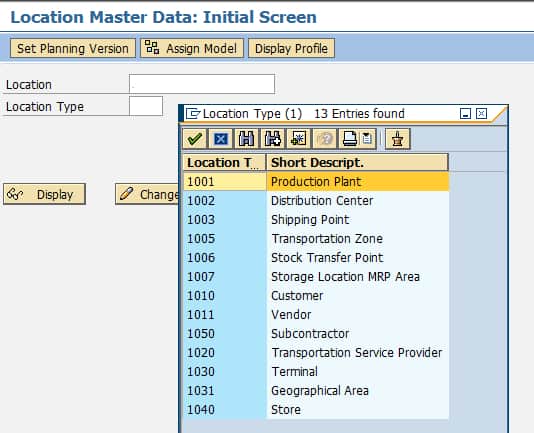
A location in APO is a master data item, which is what configures the supply network. Locations are normally created by being brought over from SAP ERP. Locations in SAP EPR can be the following types:
- Plant
- Customer Location
- Supplier
- DC
However, when they come into APO, they become locations. This is surprising to some, especially concerning suppliers, as suppliers are not represented as “plants” in SAP ERP. However, this process is automated by the CIF. The screenshot below shows the detail that opens up to the Purchasing Info Record section of the CIF:
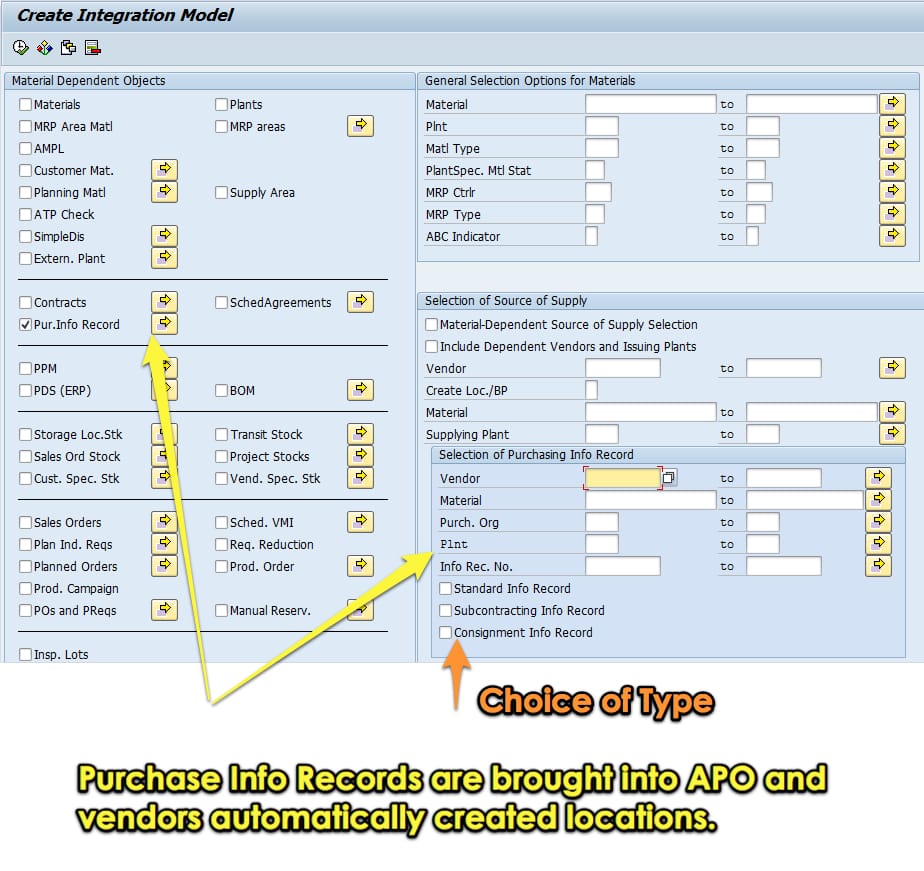
A supplier location can be brought in as a standard supplier, a subcontract location, or a consignment location. The supplier is then shown as a vendor type, which can be seen from the screenshot below:
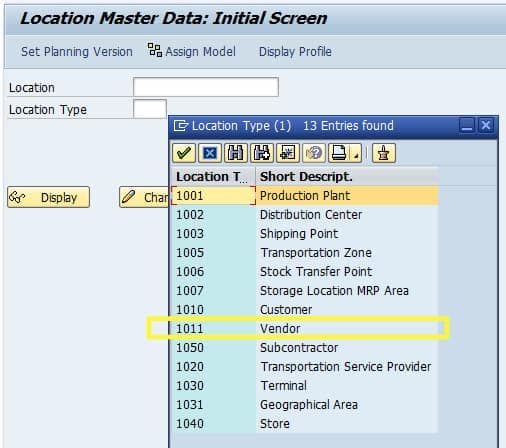
All of the possible location types are listed in this drop-down of Location in APO. MRP Areas also map over to APO as locations, but the location Storage Location MRP Area or location 1007.
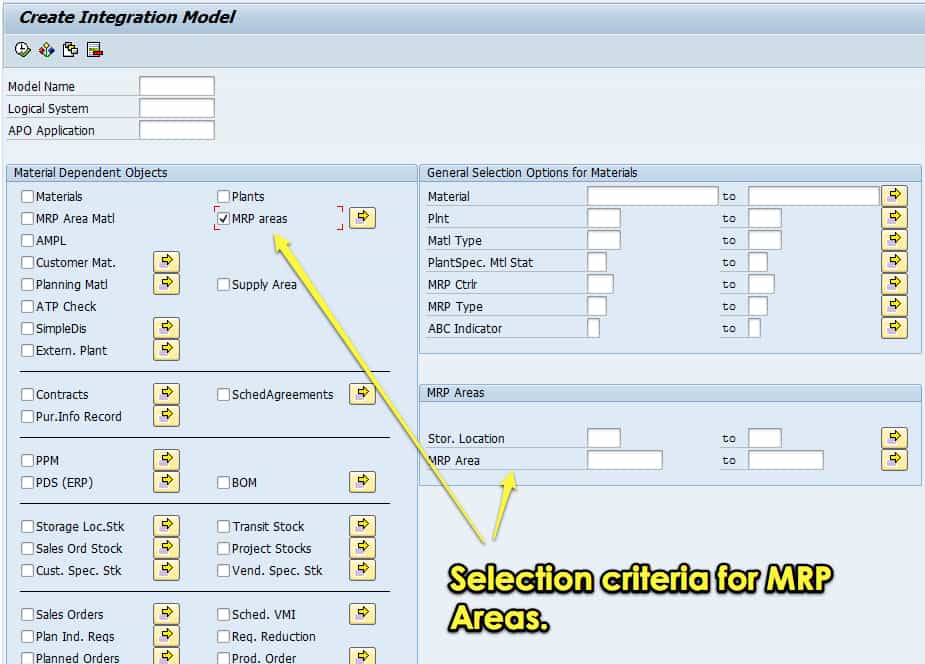
Shipping Points, Transportation Zones, Customers, none of these are ERP locations, but they all come across as locations in APO.